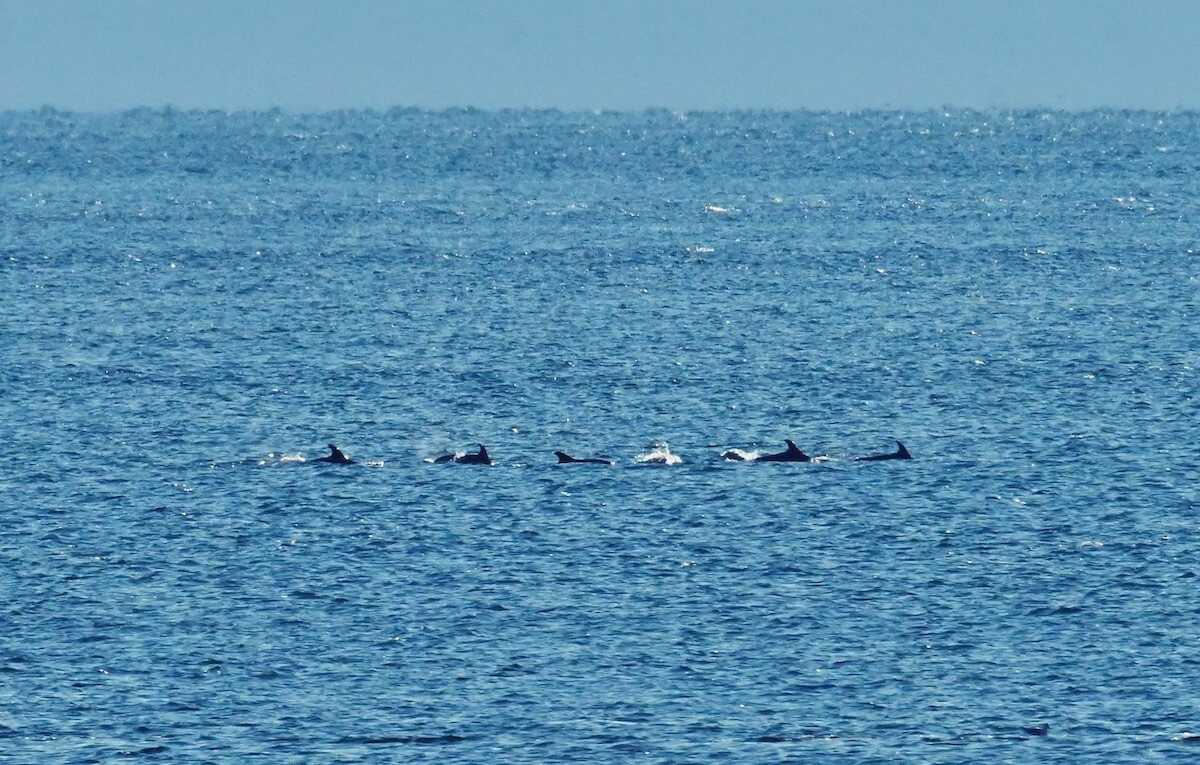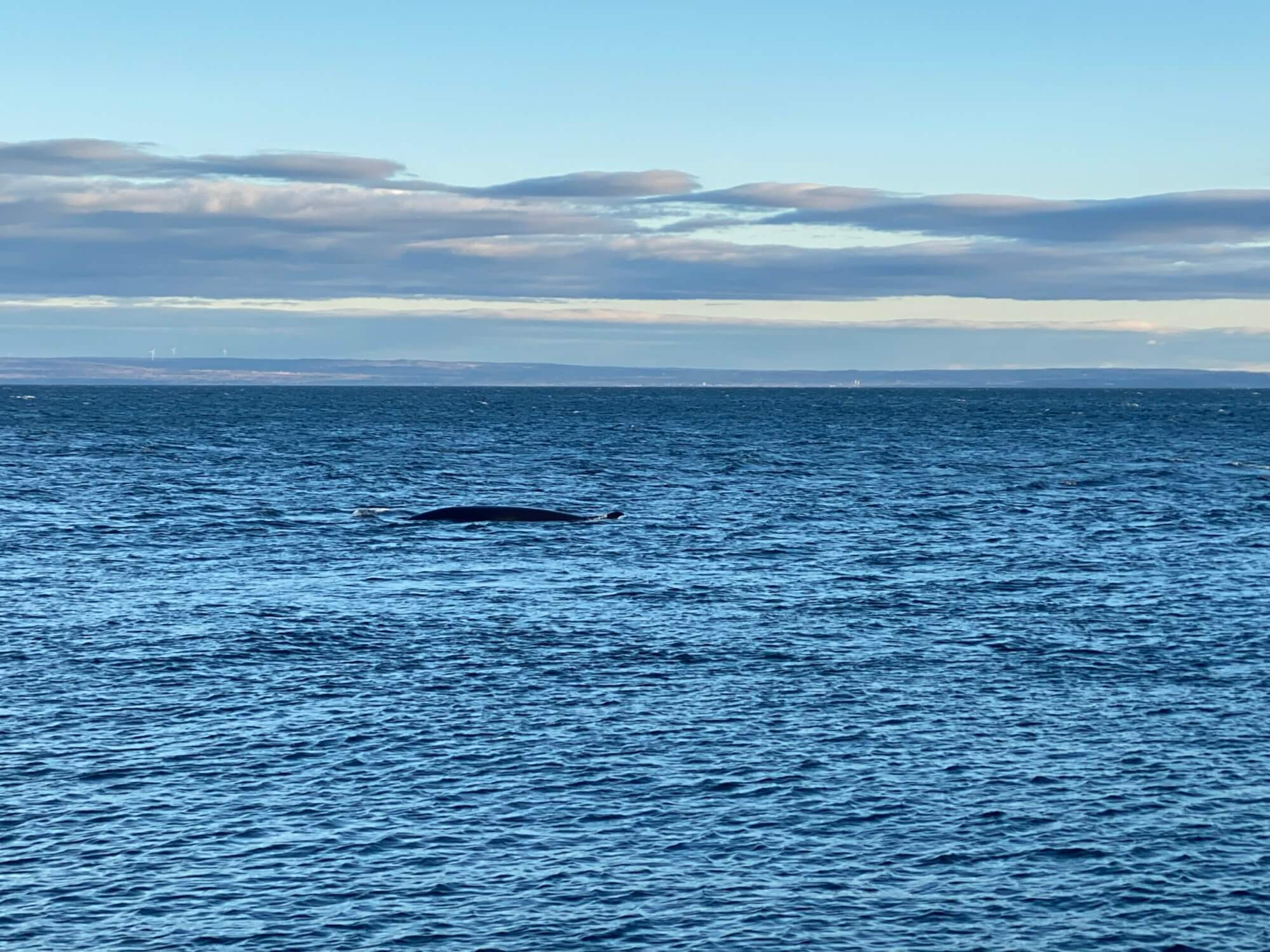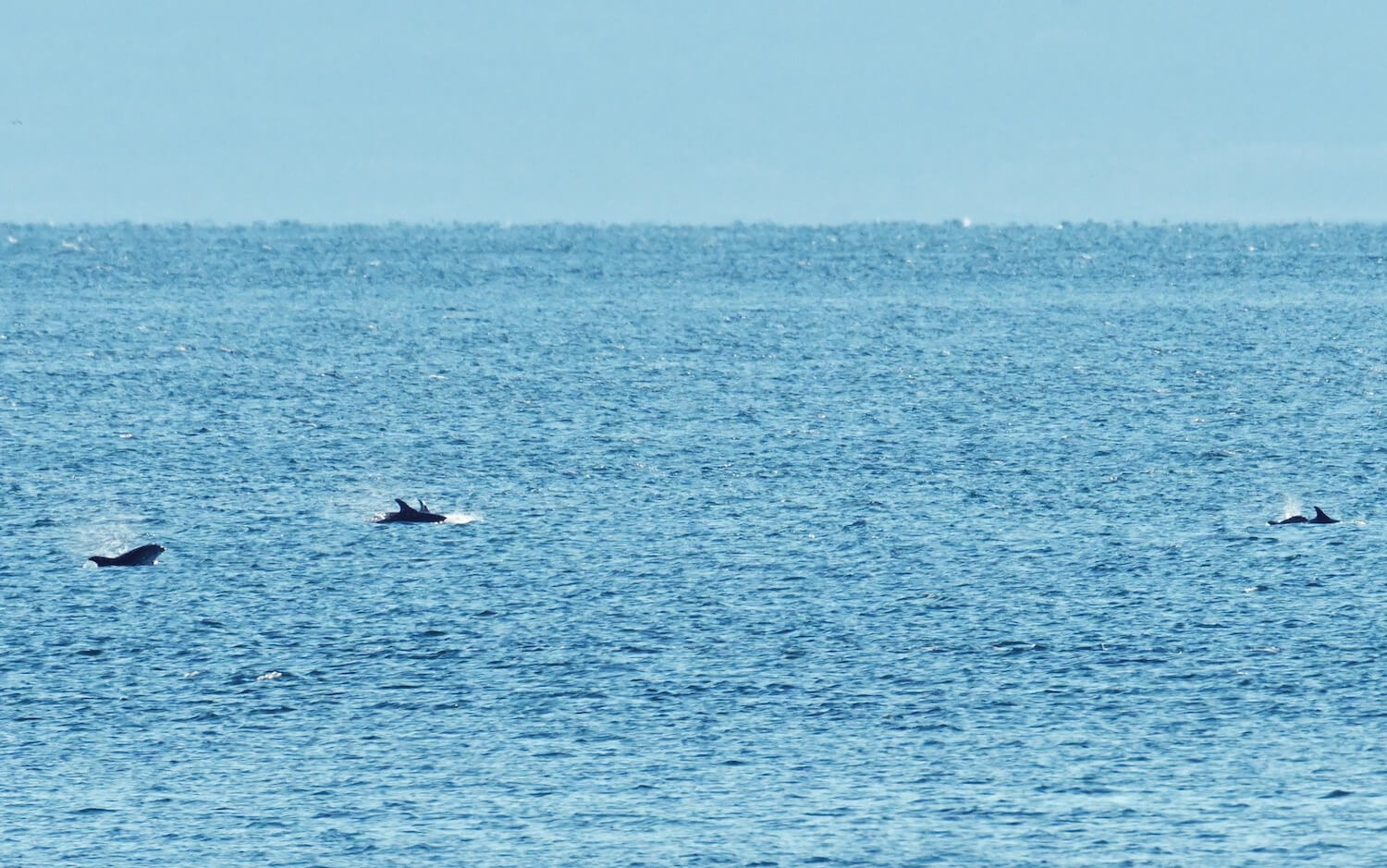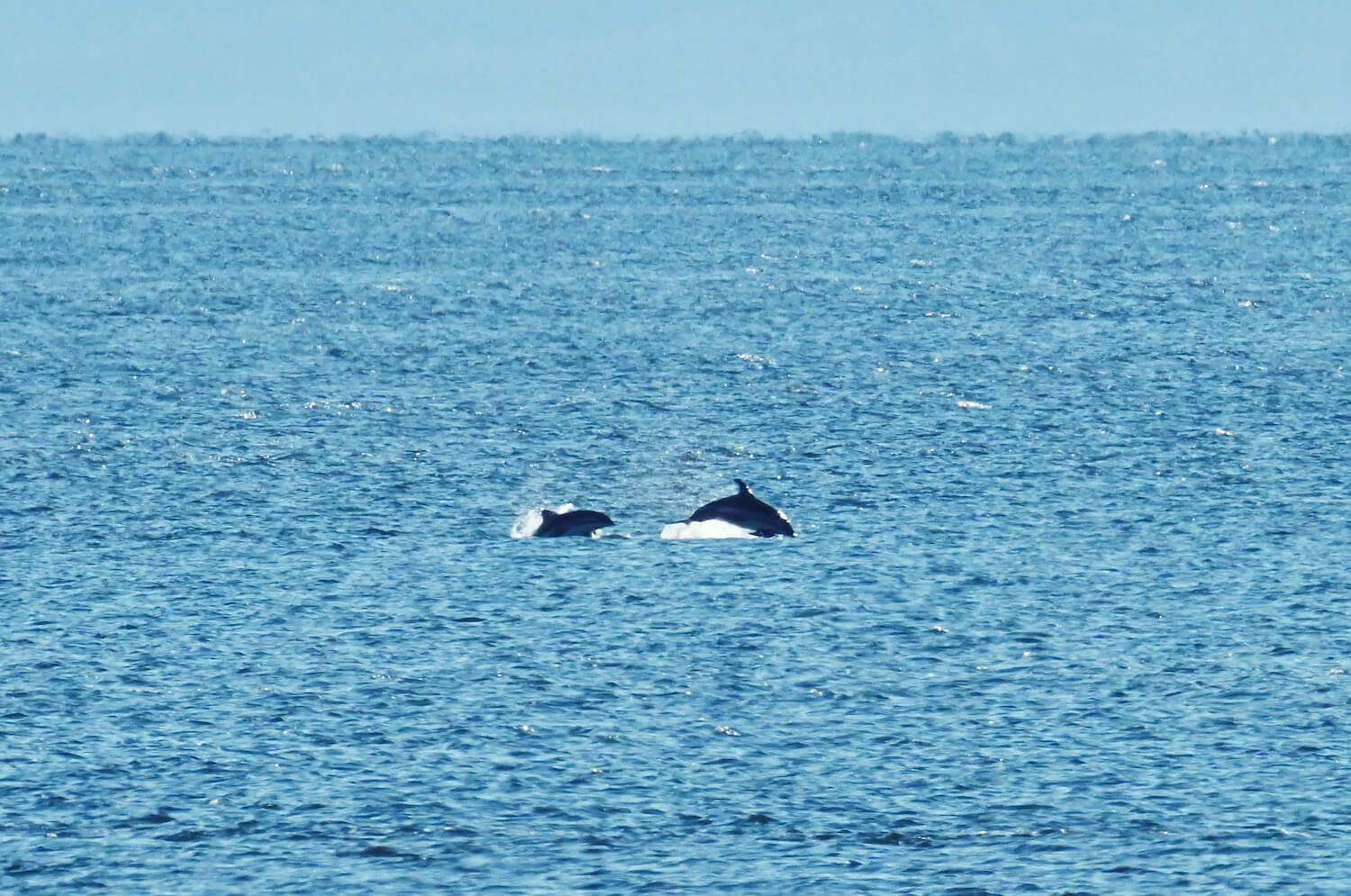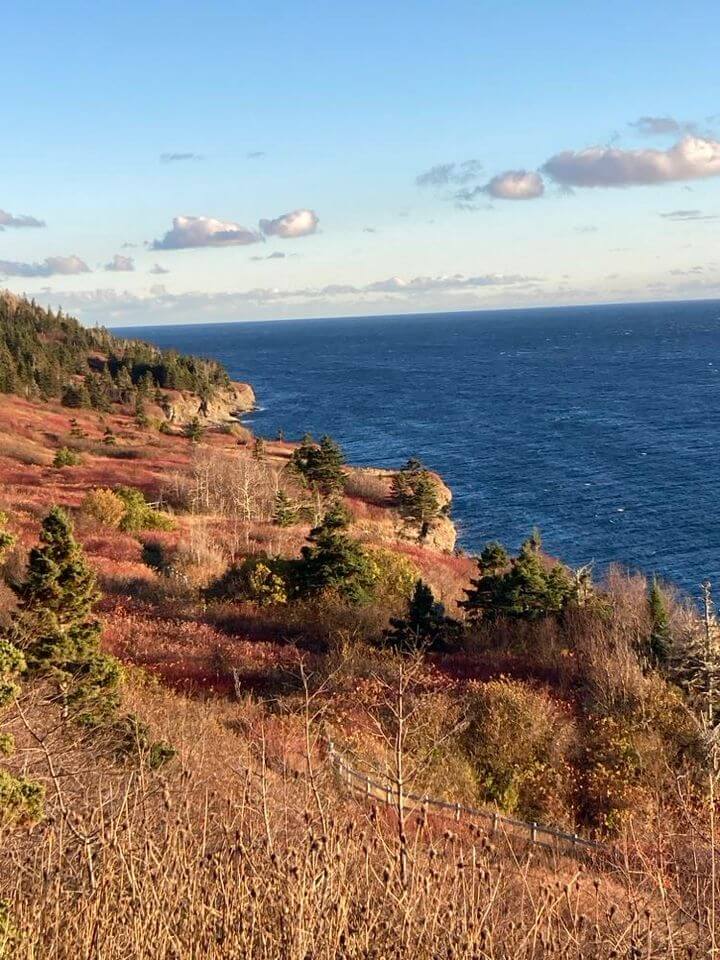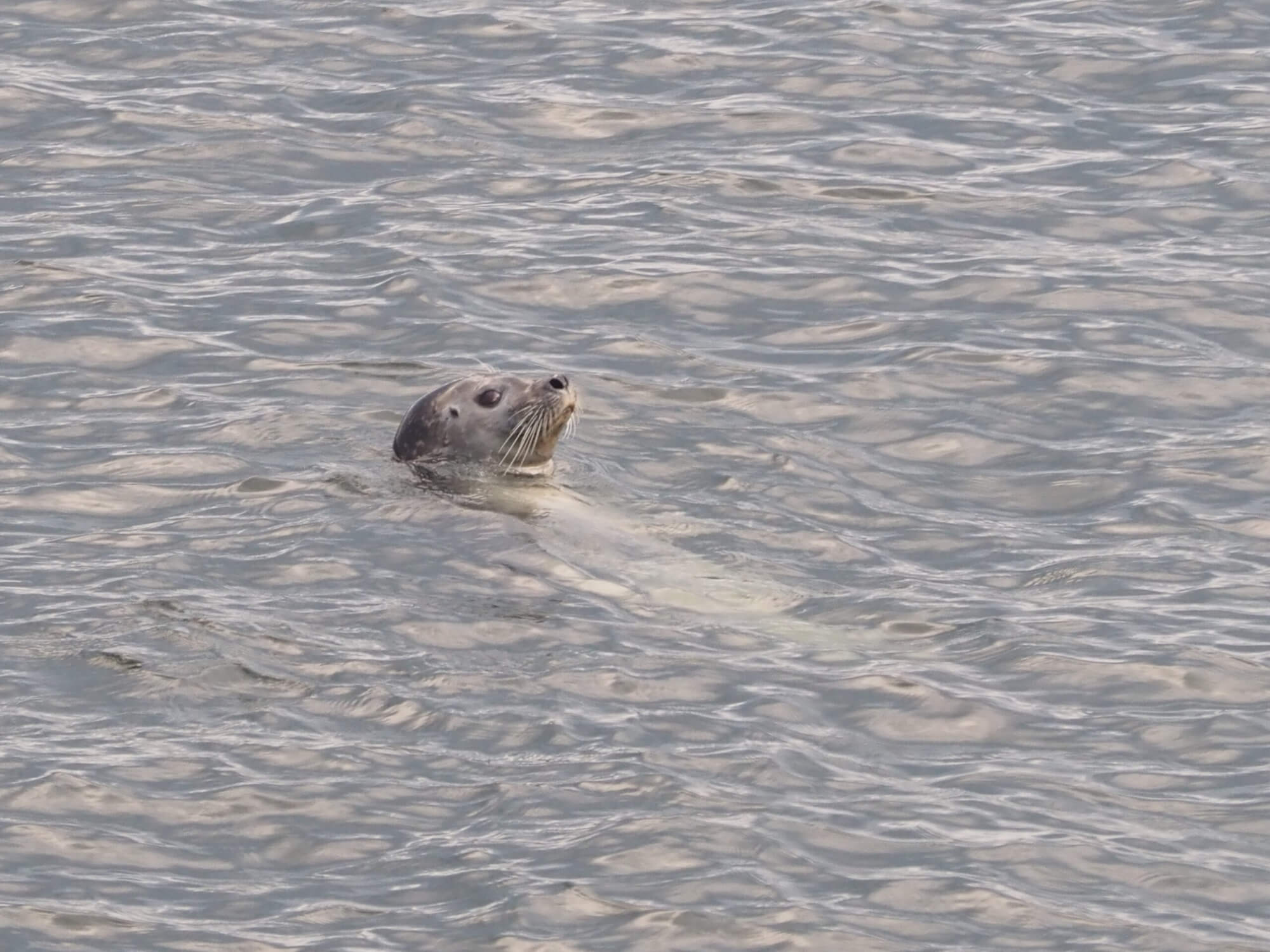November kicked off with some pleasant surprises in the St. Lawrence. It is said that hundreds of dolphins ventured as far upstream as Les Escoumins before disappearing offshore, a few humpbacks reached Tadoussac, and harbour porpoises made an appearance in Charlevoix. All of these observations were made from shore (despite the rain and fog) by observers who are increasingly fascinated by the life that populates our frigid waters. We are grateful for their reports, as they help keep this column alive!
Visitors visited in Port-au-Persil
During an early November paddling trip in Port-au-Persil, a kayaker had the chance to observe several species of lingering marine mammals in the St. Lawrence. From a good distance, she tallied “5 to 10 harbour porpoises, 2 or 3 seals, families of belugas including one with a calf, and a single minke whale.” A friendly reminder that belugas are endangered and that a number of rules apply when we observe them on the water.
The following day in Les Bergeronnes, one again in her trusty sea kayak, this avid observer reports: “We were able to observe a lone beluga through the waves, as well as two families of belugas, a pair of minke whales, seals, and a fin whale surfacing for air.” All in all, a rather exceptional observation, since few fin whales have been spotted in this area this fall!
A beluga also poked out its head in Saint-Irénée according to one resident, somewhat disappointed not to have seen more this week. In winter, this resident whale of the St. Lawrence seems to prefer areas with 70% to 90% ice cover. This is why scientists believes that the population migrates farther down the estuary, namely between Forestville and Pointe-des-Monts, and perhaps even into the gulf. Aerial surveys (article in French) have identified several individuals as far as Sept-Îles, as well as other small groups in the estuary as far as Rivière-du-Loup.
Action in Tadoussac
In Quebec’s Côte-Nord region, the month of November has reserved some nice surprises, certainly welcome but also unexpected after a quiet October. One chilly morning, a nature enthusiast admired over 300 Atlantic white-sided dolphins for hours off the coast of Les Escoumins. These agile cetaceans were swimming in “several groups of variable size,” he noted.
With their dark grey, almost black backs, white and yellow lines starkly contrasting against their grey flanks, and bright white extending over their bellies and under their rostrums, white-sided dolphins exhibit a stunning assortment of hues. These streamlined cetaceans often stay farther offshore. In the West Atlantic, they can be seen from southern Greenland to Cape Cod, but the limits of their range are not well known. Their varied diet, which notably includes herring, mackerel, smelt, hake, and squid, is likely a determining factor of their seasonal distribution. This might explain why they only venture into the estuary in the fall.
Another surprising visit: four humpback whales made their way into the Saguenay–St. Lawrence Marine Park, quite close the Prince Shoal Lighthouse. Though fewer eyes have been gazing at the water of late, one birder was able to observe these animals for a few days from the Tadoussac dunes. This species normally begins its southbound migration around this time of year. However, some individuals many not migrate annually. Does it depend on their sex, their age, their sexual maturity, or other factors? The jury’s still out!
The minke whales and belugas that still dot the waves help maintain a feeling of joy as winter approaches.
With whales at Pointe-des-Monts
At the end of October, an observer on board the Matane-Godbout ferry braved the weather in hope of catching a glimpse of a spout or a dorsal fin. Her patience having been rewarded, she shares her sightings: “Several porpoises, 2 minke whales close to the docks, 2 or 3 humpbacks, one of which was farther away, and a fin whale heading east toward the gulf, just like two of the humpbacks.”
Mysteries in Sept-Îles and a mild end of fall in Gaspésie
A North Shore resident reported the presence of two minke whales as well as a distant breath of a large, unidentified rorqual. At the same moment, but much farther away, the tail of an unidentified cetacean emerged from the water. Two days later, he noticed two harbour seals that, “for over an hour, would poke out their heads, sniff the air for 2 minutes before plunging back into the water only to resurface 4 or 5 minutes later.” Harbour seals can dive for up to 30 minutes and reach depths of up to 480 metres! To do so, they lower their heart rate and stock up on oxygen in their blood and muscles.
In Gaspésie, a resident shares her sightings for Monday, November 4: “I saw two minke whales in plain view in Gaspé Bay, not to mention a large spout farther out. Harbour seals are also still present in Haldimand and Anse aux Cousins,” she adds.
Serendipitous November
In addition to harbour porpoises, seals and minke whales, a couple of North Shore residents were able to spot a barred owl, razorbills, a black guillemot and even a coyote all in the same day!
Where are the whales this week? Observation map
These data were reported by our network of observers. They give an idea of the presence of whales and in no way represent the actual distribution of whales in the St. Lawrence. Just for fun!
Click on the whale or seal icons to discover the species, the number of individuals, additional information or photos of the sighting. To enlarge the map, click on the icon in the top right-hand corner. The map works well on Chrome and Firefox, but not so well on Safari.
To display the list of sightings, click on the icon in the top left-hand corner.
Thanks to all our collaborators!
Special thanks go out to all our observers who share their love for marine mammals with us! Your encounters with cetaceans and pinnipeds are always a pleasure to read and discover.
On the water or from shore, it is your eyes that give life to this column.
Marie-André Charlebois
Thalia Cohen Bacry
Clara Comeau
Laetitia Desbordes
Kevin Maltese-Crottier
Diane Ostiguy
Stéphane Pagès
Renaud Pintiaux
Andréanne Sylvain
Marielle Vanasse
Xinlan Yu
And to all the others!
Additionally, we would like to acknowledge the following teams that also share their sightings:
Sept-Îles Research and Education Centre (CERSI)
Group for Research and Education on Marine Mammals (GREMM)
Marine Mammal Observation Network (MMON)
Quebec Marine Mammal Emergency Response Network (QMMERN)
Mingan Island Cetacean Study (MICS)
Would you also like to share your observations?
Have you seen any marine mammals in the St. Lawrence? Whether it’s a spout offshore or just a couple of seals, drop us a line and send your photos to [email protected]!


